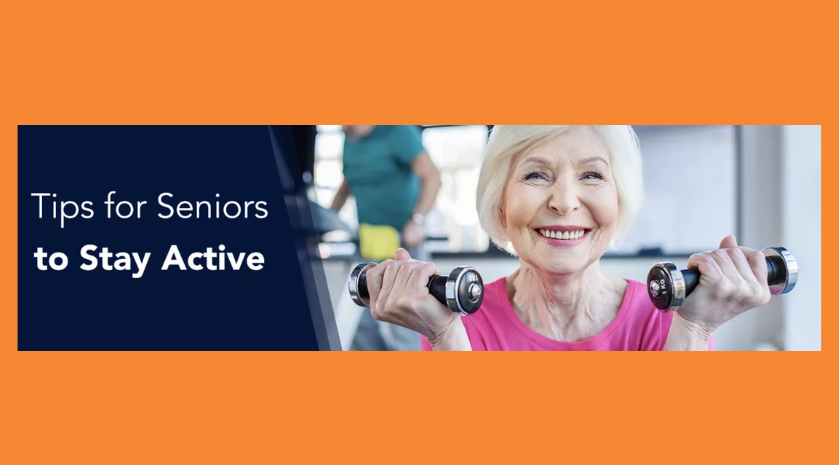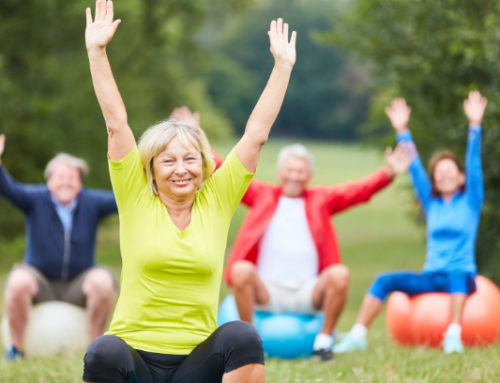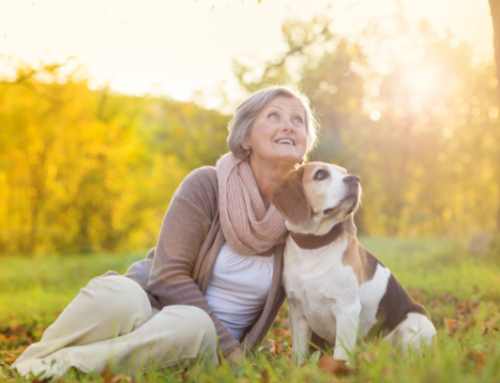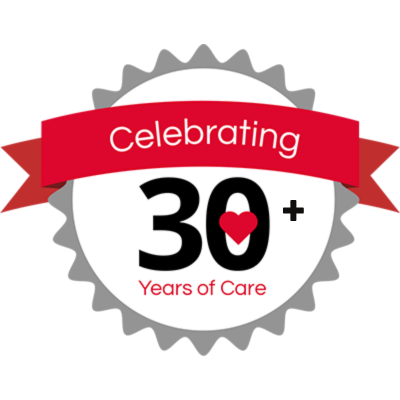Helping Older Adults Stay Active
Call (786) 981-9882 now for a free home visit!
Having an active, healthy lifestyle isn’t just for everyone under age 65. In fact, staying active is extremely important for seniors — it can help reduce the risk of several different diseases, as well as improve some of the conditions that are often synonymous with aging.
The goal for many seniors is to remain living independently as long as possible — through exercising and a healthy diet, they can keep their strength and mobility, enabling them to stay independent for a longer period. That doesn’t mean an exercise plan for a senior has to look the same as that of a 20-something. In fact, they are — and should be — very different.
Common Conditions and Benefits of Exercise
The list of diseases and conditions senior exercise can either prevent or improve is lengthy. We’ve included some of the most common below, along with a description of the effect exercise has on that specific disease or condition.
Arthritis
While moving can’t prevent arthritis, it can undoubtedly help seniors manage it. Johns Hopkins Medicine is one of many organizations that encourage physical activity as a part of managing arthritis, citing several benefits, including keeping the muscles around joints strengthened, lubricating the joints, decreasing bone loss and helping control joint swelling and pain. All these benefits can help provide some level of relief in arthritis management for seniors.
Depression
Seniors are at an increased risk for depression. It’s evident depression isn’t a part of healthy aging for seniors, but it’s an unfortunate reality. According to the Centers for Disease Control and Prevention, depression is more common in people who have other illnesses — and 80 percent of seniors have at least one chronic health condition. Fortunately, studies show exercise can account for a more than 30 percent decrease in depression symptoms.
Diabetes and Obesity
Type 2 diabetes and obesity are two closely related metabolic dysfunction conditions where the metabolism’s abnormal function leads to weight gain, and glucose and insulin levels that are tough to control. Exercising and eating a healthy diet can help regulate glucose and insulin levels, and speed up metabolism — all to help prevent you from gaining weight.
Heart Disease
One in every four deaths is due to heart disease. High blood pressure, glucose and LDL cholesterol are all associated with heart disease. Exercise and a healthy diet can reduce all three — ultimately lowering a senior’s risk for heart disease.

High Blood Pressure
Exercise can have a significant impact on blood pressure. People who exercise at a moderate intensity level for at least 10 minutes, three times per day, are likely to see a drop in their systolic blood pressure levels.
Memory Loss
A study conducted by a team of researchers at four universities found moderate aerobic exercise increased the size of the part of the brain that plays a role in memory, known as the hippocampus. The same study found this level of exercise also improved spatial memory. It isn’t the only one — several studies claim moderate-intensity exercise can reduce the risk of dementia, too.

Healthy Eating Habits for Aging Seniors
There are two main categories of healthy habits for seniors: eating and exercise. It’s no surprise our bodies change as we age — and those changes extend into the way our bodies process foods. A slower metabolism, slower absorption of nutrients, appetite loss or stomach upset are just a few of the challenges seniors face as their bodies age. Here are a few healthy eating habits seniors can adopt in response to their aging bodies.
- Drink water. It’s important to keep your body hydrated. Instead of filling up on caffeinated drinks, drink at least half your body weight, in ounces, of water each day.
- Eat low-fat dairy products. As bones age, they become weaker, so an increase in the number of low-fat dairy products and a calcium supplement — paired with vitamin D — can keep your bones on track.
- Increase your B12 consumption. Look for foods that have vitamin B12. As our bodies get older, they don’t absorb as much B12. If you increase the amount you consume, you can be sure you meet your needs.
- Get plenty of protein. Lean protein is important at all stages of life, including aging seniors. It’s fuel for your body and can help you feel full and get the nutrients you need. A few examples of lean protein include eggs, chicken, nuts and fish.
- Make fruits and veggies half your plate. Fiber is another nutrient that’s crucial to your health as you age. Raw fruits and vegetables are a great source of fiber and other vitamins and minerals that can help you avoid constipation, maintain weight and reduce your risk of future heart problems.
- Avoid saturated and trans fats. Check your labels and avoid foods with saturated and trans fats. Instead, opt for healthy fats, like those found in seeds, nuts, avocados and fish.
- Choose whole grains. When you have a choice between white bread and whole wheat, choose whole wheat. Other good sources of whole grains are brown rice and whole-grain cereals. Not only do these grains help your digestion, but they’re also good for the health of your heart.
Tips for Seniors to Stay Active
Healthy eating habits are part of how to maintain good health in old age — the other part is exercise. Unfortunately, according to the Centers for Disease Control and Prevention, one in three people over the age of 75 does not engage in any physical activity.
Exercise can make seniors and their relatives nervous, due to the safety risks that could come with some activities. The key to staying active while staying safe is to adapt your fitness activity to your age and health. Everyone is at a different level, and understanding that level is the first step.
Before we give you some senior exercise ideas, here are a few tips for seniors who are interested in functional fitness gains.
- Check in with your doctor. If you aren’t sure where to start, or you’re feeling uneasy about exercise, check in with your doctor. He or she knows your medical history and will be able to tell you if there are any exercises you should avoid —or a place that would be great to start.
- Drink water. This tip is part of a healthy diet, but also an exercise regimen. It’s especially important to stay hydrated when you’re exercising. Be sure to drink water before, during and after you exercise, so your body has plenty of fluids and doesn’t become dehydrated.
- Start small. If you don’t currently have an exercise plan, start small and celebrate little victories. You may begin with a five- to 10-minute walk that leaves you breathing heavily. But over time, you’ll be able to do 10 to 15 minutes, or even longer. If anything, always err on the side of doing less — doing too much can be dangerous.
- Warm up and cool down. Whether you’re going for a long run or a short walk, even if you don’t feel like you’re doing much as you begin exercising, it’s always important to warm up and cool down to get your muscles used to moving.
- Use proper equipment. If you’re going to be biking, make sure you have a helmet that’s comfortable and protects you. If you’re going to be walking or jogging, make sure your sneakers are supportive and comfortable. Not having the right equipment can cause its own set of problems, so it’s essential to invest in equipment that will be safe and effective.
- Be prepared for change. As we get older, developments in our health may get in the way of some of the activities we’ve done for exercise in the past. For example, a condition like arthritis, or an injury, may make specific activities difficult. In that case, don’t throw in the towel. Instead, be prepared to try a new form of exercise so you can continue to be active.
- Listen to your body. When you exercise, you should feel like you’re working and breathing heavily, but you shouldn’t be gasping for air. Anything that feels like it’s too hard probably is — don’t forget to pay attention to your body when you’re deciding how far to go, how much to stretch or how much to lift.
- Be aware of your surroundings. As a senior, it’s important to recognize your senses aren’t as sharp as they once were. Make sure you’re extra-attentive to your surroundings, especially if you’re exercising outside.
- Pay attention to the weather. Extreme heat and cold can be dangerous for seniors. Make sure you know what the forecast looks like and prepare yourself if your exercise takes you outside. Move your exercise indoors or take a rest day instead of risking exposing yourself to extreme temperatures or weather.

Best Exercises for Seniors
As you keep these tips in mind, three different types of exercises are ideal for seniors — flexibility, strength and aerobic.
Flexibility
These exercises are the easiest to do. Their goal is to maintain or improve range of motion. It may seem simple, and it is, but failure to do these types of exercises as you age can ultimately cause a restricted range of motion, which can lead to mobility issues. Mobility issues can lead to the inability to live independently. Everything is connected, and these simple exercises can help keep your joints and muscles flexible, maximizing your range of motion. Flexibility exercises include movements like head rolls and stretches and moving your ankles and wrists in a circular motion to loosen up joints.
Strength
The next type of exercise that’s best for seniors is strength exercises. Our bones weaken with age. Having stronger muscles surrounding the bones becomes increasingly important. Several activities in your daily life require strength — carrying groceries, getting out of a chair — so it’s important to continue to move your muscles. Another benefit of strength training is reducing your risk of injury due to a fall — the more muscle you have surrounding the bone, the less likely you are to break a bone if you fall.
Strength activities can be as simple as raising your knees while you’re in a seated position or raising your each of your legs behind you as you hold on to a sturdy chair. When you’re ready, these exercises often include the use of light weights to do exercises like shoulder presses, bicep curls or pushups and squats — with or without additional weight.
Aerobic
The goal of aerobic exercise is to get you breathing faster, and your heart beating faster — and to do it all at a moderate or vigorous level for at least 10 minutes at a time. How do you know what level you’re giving? Let’s say we have a 10-point scale – zero is sitting, and 10 is working as hard as you possibly can. A moderate level is around five or six, able to talk, but unable to sing, whereas a vigorous level would be a seven or eight, leaving you unable to speak more than just a few words.
Many seniors view cardio as the toughest type of exercise, but it doesn’t have to be. Aerobic exercises for seniors come in all forms, the most common being walking. Other options — based on your fitness level — may include jogging, running, biking, swimming, Zumba or another related exercise.
It’s important to consider balance as you decide on an aerobic activity. Even something as simple as walking may present a risk of falling. If that’s the case, a treadmill may provide the additional support needed to get the aerobic exercise, but without any danger of falling. It’s all about tailoring the exercise to you.
Sample Exercise Plan for Seniors
You know what types of activities are the best exercises for seniors, but how much time should you spend on each? Should you plan to do them all every day? While you can do flexibility exercises daily to maintain and improve your range of motion, every day is too much when it comes to aerobic and strength exercises. The Centers for Disease Control and Prevention recommends adults 65 years of age and older, who have no limiting health conditions, should get at least 150 total weekly minutes of moderate aerobic activity — like brisk walking. It also recommends strength exercises two or more days per week that work all major muscle groups — that means your legs, hips, back, abdomen, chest, shoulders and arms.
Here’s a sample workout calendar for a week, based on these recommendations:
| Monday | Tuesday | Wednesday | Thursday | Friday | Saturday | Sunday |
| Two 15-minute walks | Two 15-minute walks | 30-minute cycling, swimming, water aerobics, Zumba, etc. | Rest | A 30-minute walk, or two 15-minute walks | 30-minute cycling, swimming, water aerobics, Zumba, etc. | Rest |
| Strength | Strength | Strength | ||||
| Balance | Balance | Balance | Balance | Balance | Balance | Balance |
| Flexibility | Flexibility | Flexibility | Flexibility | Flexibility | Flexibility | Flexibility |
*Chart from https://www.healthline.com/health/everyday-fitness/senior-workouts

Healthy Activities for Seniors
A program called SilverSneakers™ is available. More than 14,000 locations throughout the country offer this program, which sponsors activities and social events that are designed to keep seniors healthy, but also to encourage social engagement. Membership with SilverSneakers™ gives seniors access to this program at all 14,000 locations, as well as a basic gym membership to the fitness facilities that offer the SilverSneakers™ program. More than 91 percent of SilverSneakers members say the program has improved their quality of life, so the program comes with glowing reviews.
In addition to the official SilverSneakers™ program, gyms across the country also offer exercise classes specifically designed for seniors. LA Fitness, for example, has a Senior Fit class that encourages seniors to join for an easy-to-follow workout with lightweight dumbbells. YMCAs also usually offer an active older adults class for seniors ages 65 and older — free for members. You can check your local gym for senior classes, or you can use the International Council on Active Aging’s senior-friendly fitness facility locator to find a location near you.
Whether you choose to begin or continue your exercise routine alone, with a group of friends or at a local gym, the benefits of exercise are sure to help you maintain good health in old age.
Call (786) 981-9882 now for a free home visit!








